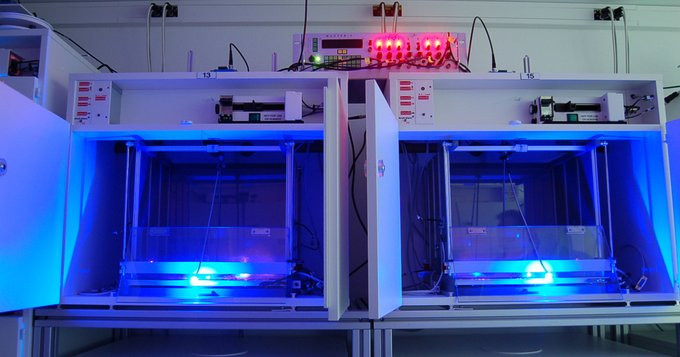UV rays kill cancer cells in mice
Sci-fi movies remind us again and again that ultraviolet rays can be used against vampires, but now science is actually trying to use it to fight a dreaded disease: cancer . The initial test showed potential high efficiency from this method.
Chemotherapy for cancer patients is a destructive treatment - it kills both cancer cells and healthy cells. It wears away the patient's body with the minimum hope that they can prolong life a little longer, or most optimally, to prevent cancer from continuing to grow and metastasize. Chemotherapy is often used in cases of cancer in areas where it is difficult to directly access or can no longer operate.

The benefit of this approach is to allow treatment in a specific area of the body.
A new method of promising results in the laboratory eliminates 95% of cancer cells in mice within 2 hours, according to Engadget. This approach is based on a biological technique called optogentics , which uses light to fight cancer cells. This method can be used for patients who are unlikely to respond to other methods.
How to do is described simply, as well as safer than other treatments. First, the researchers injected nitrobenzaldehyde into the tumor, waiting for it to spread throughout the cells. Finally, ultraviolet rays are projected onto the tumor.
The combined effects make the cell highly acidic, thereby killing them. Matthew Gdovin, a professor at the University of Texas San Antonio, said: "Although there are many different types of cancer, the common point is that they are all affected by the process of spreading this suicide cell."
Another benefit of this approach is to allow treatment in a specific area of the body, instead of affecting the whole body as chemotherapy. And this is also the least invasive therapy required, just injecting nitrobenzaldehyde and ultraviolet radiation.
While not yet widely used, researchers hope this method will soon become an effective treatment option for tumors in organs that make surgery difficult, such as the brainstem and arteries. master or spine. This will also be an option for patients who do not continue to respond to radiotherapy or the risk of radiation mutations when using radiotherapy in children.
- Can we kill cancer cells when they're sleeping?
- Breakthrough kill metastatic cancer cells
- Singapore discovered how to kill new cancer cells
- Test virus 'kill cancer cells'
- Caffeine is used to kill skin cancer cells
- 8 foods help kill cancer cells
- Develop nanotechnology to kill cancer cells
- Creating cells to kill tumors
- Technology causes cancer cells to destroy themselves
- Scientists have successfully turned breast cancer cells into ... fat
- Russian and Swedish scientists have found a way to kill cancer cells
- 'Factory' produces cancer drugs right in the body
 Green tea cleans teeth better than mouthwash?
Green tea cleans teeth better than mouthwash? Death kiss: This is why you should not let anyone kiss your baby's lips
Death kiss: This is why you should not let anyone kiss your baby's lips What is salmonellosis?
What is salmonellosis? Caution should be exercised when using aloe vera through eating and drinking
Caution should be exercised when using aloe vera through eating and drinking